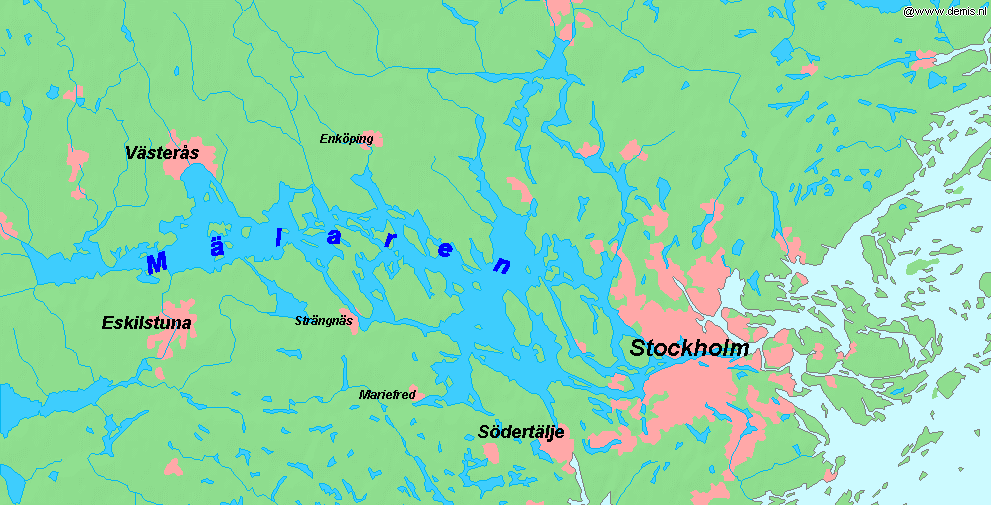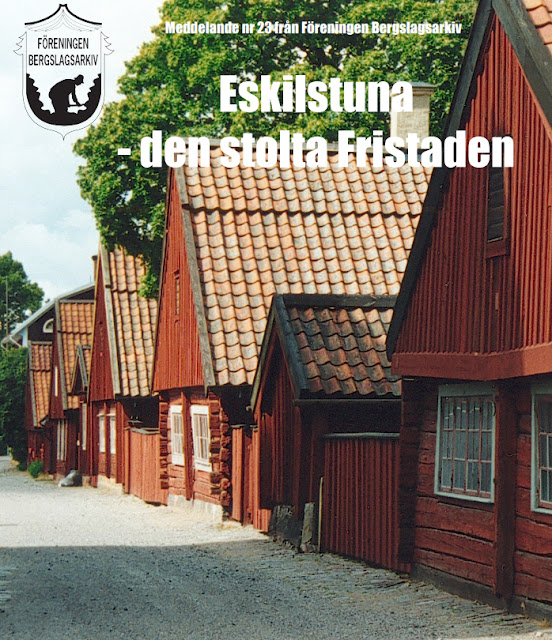The Hallman line is on my mother's side of the family. Her maiden name was Hallman.
The first Hallman we know anything about was Magnus Hallman, my 4th great-grandfather. So far no birth records have been found (and trust me, I've looked). The best information we have indicates he was born in the parish of Gåsborn in Värmland county. Värmland is a western county of south-central Sweden bordering Norway. The 1760 birth records for Gåsborn parish exist and are easily accessible online, but Magnus' birth is not included.
The first Hallman we know anything about was Magnus Hallman, my 4th great-grandfather. So far no birth records have been found (and trust me, I've looked). The best information we have indicates he was born in the parish of Gåsborn in Värmland county. Värmland is a western county of south-central Sweden bordering Norway. The 1760 birth records for Gåsborn parish exist and are easily accessible online, but Magnus' birth is not included.
For the most part, all of my other Swedish ancestral men were poor peasant farmers in the southern counties of Sweden. Although the Hallmans did, at times, resort to day-long, back-breaking farm labor in order to provide for their families, some of them had opportunity to learn a trade and/or engage in lengthy military service.
We first find 25 yr-old (approx) Magnus in the rapidly growing village of Fristaden in Eskilstuna Kloster in 1785. Next to a person's name and birth information recorded by the local priest in the household church record book was the place where new parish residents were "komifrån" or coming from. I've solicited help from many knowledgeable sources and, so far, no one has been able to match his previous residence to any actual location. If anyone can decipher it the mystery can finally be solved:
Eskilstuna was quickly becoming a major industrial center and Fristaden, especially, was drawing in many craftsmen and apprentices involved in metal work. From the mid-1300s, all of the Swedish tradesmen were required to belong to craft guilds. Until 1846 the guilds were highly regulated by the Swedish government. (For more information, click here.) However, by a parliamentary decision in 1771, an area within the Eskilstuna Kloster, Fristaden, was deregulated from traditional laws and came to be known as Sweden's first "sanctuary." In Fristaden, craftsmen who engaged in iron, steel, or metal processing would be free to establish themselves and conduct their business free of oblique and tariff duties. The sanctuary grew rapidly both in the number of entrepreneurs and in the number of farms where operations were conducted. In Fristaden, craftsmen fabricated everything from locks, knives, and scissors to household utensils, sword blades, and nails. In 1773, 139 people live in Fristaden, of which 32 were craftsmen. In 1785, when Magnus arrived, the number of masters had increased to 69. The number of farms with workshops increased during the same period from 13 to 43.
If you look closely at Magnus' name in the record pictured above you can see the title of "Ges" in front of his name. This would be short for "gesällen" or journeyman. If Magnus' father was a blacksmith, Magnus could have completed his basic apprenticeship with him and is now "on the road" learning from other master craftsmen.
According to Eskilstuna historian Elin Eriksson (here) it was a busy and exciting period of time in Fristaden. The working fires burned in the homes of each master craftsman from early in the morning until late in the evening. The craftsmen would house their own families as well as 2 or 3 apprentices and 2 or 3 associates. Apprentices could sometimes sleep in the shop but often the homeowner provided a sleeping loft in which unmarried workers could rent a bed. Master Blacksmiths had quite a high status in society and lived quite well in their red painted houses complete with window glass.
By the 1970s most of the Fristaden buildings had been demolished to accommodate modern office buildings and residential complexes. The seven remaining wooden houses have been erected on one of the original sites, at the intersection of Nygatan & Bruksgatan in Eskilstuna (GPS coordinates 59.371802, 16.506265), in what is called the Fristads Reserve.
 |
| The only remaining Fristaden houses |
In 1787, following 2+ years as a blacksmith journeyman in Fristaden, Magnus moved about 100 km north to the village of Smedstorp in the parish of Jäder. "Smed" or "smeden" is the Swedish word for blacksmith, so "Smedstorp" appears to be a place centered around blacksmithing. The image of the Jäder church record (below) shows a title in front of his name, but, unfortunately, any time a resident moved away their name was crossed off the parish record and, in this case, it made his title somewhat indecipherable. (Although, it might look like "Smed ges..." indicating that he was still a journeyman.)
In September 1788, 28 yr-old Magnus married 18 yr-old Anna Pehrsdotter, a native of Jäder. Five months later (oops!) their first daughter, Anna Stina, was born.
At about the age of 31, Magnus began his rote military service with the Södermanlands Regements 148. He was assigned the military last name of "Wärn," remained in Jäder parish, but relocated to Svartsjöäng where he and his family moved into a small house or "soldattorp" provided by the local farmers for their allotted soldier. (For more information about the Swedish military allotment system click here.) He was removed from military service after just 2 years for being "undermålig och klen" or inferior/deficient and weak. (Perhaps it was mandatory military service that never appealed to him in the first place.)
In April 1794 their 2nd daughter, Greta, was born in Jäder followed by a son, Eric, born in February 1800. Eric lived for only 2 months.
In June of 1800 the family moved about 130 km southeast to Helgarö, a parish nestled in the midst of beautiful Lake Mälaren. Lake Mälaren is the 3rd largest fresh water lake in Sweden. On its eastern side it meets the Baltic Sea on the shores of Stockholm and meanders westward around islands of all sizes and through nooks and crannies of breathtakingly beautiful countryside.

In March 1801 their daughter Brita Catharina was born and in Jan 1804 Anna gave birth to a son, Magnus. Four days following Magnus' birth, Anna died. This may have put a lot of responsibility on 15 yr-old Anna Stina to help care for her younger siblings, including a 4 day-old infant. Magnus and his 4 children continued to live in Björsund, a small town in the Helgarö parish, while he worked as the "gårds smeden" or local blacksmith.
A short nine months following the death of his first wife, 44 yr-old Magnus married 37 yr-old Annika "Anna" Olofsdotter, a native of Jäder. In February of 1806, 17 months after marrying Magnus, Anna gave birth to her first child; however, neither the mother nor the infant survived. This time Magnus not only buried a wife but an infant child as well. By 1807 his two oldest daughters, ages 18 and 13, ventured out on their own leaving 6 yr-old Brita Catharina and 3 yr-old Magnus in the care of their father.
Nine months following the death of his 2nd wife, Magnus married for a third and final time. He married 30 yr-old "maid" (never married) Karin Eriksdotter. Karin was a local girl, having been born in Helgarö. Karin gave birth to a daughter, Maria Elisabeth, in July of 1808, but sometime in 1809 Maria Elisabeth died.
On 29 March 1812, at the age of 52, Magnus died.
We didn't make it all the way to Helgarö, but we did take a boat ride from Stockholm to the site of the ancient city of Birka which was believed to be the first Viking settlement in Sweden. Birka is on the island of Adelsö in the middle of Lake Mälaren and about 40 km (as the crow flies) from Helgarö.
In addition to Magnus and Anna, I know from my research that at least three more generations of Hallman men and/or women would call Helgarö home. Many of them may have paid passage on a boat which navigated the same waters in which I found myself as they moved themselves and their families eastward seeking new opportunities and life experiences. Whether by land or by water, I feel certain we all would have felt equally awed by the expansive vistas and majestic beauty of their beloved homeland and of our shared heritage.
Their stories are yet to be told.











Comments
Post a Comment